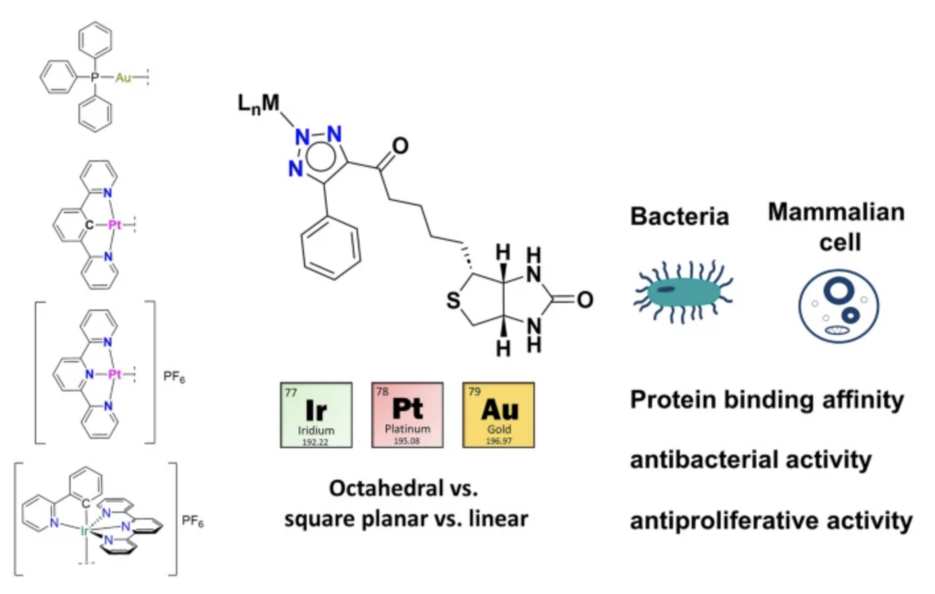Just Published in JBIC Journal of Biological Inorganic Chemistry
10/24/2024Antibacterial activity of Au(I), Pt(II), and Ir(III) biotin conjugates prepared by the iClick reaction: influence of the metal coordination sphere on the biological activity
Authors: Dominik Moreth, Lars Stevens-Cullinane, Thomas W. Rees, Victoria V. L. Müller, Adrien Pasquier, Ok-Ryul Song, Scott Warchal, Michael Howell, Jeannine Hess & Ulrich Schatzschneider
Abstract: A series of biotin-functionalized transition metal complexes was prepared by iClick reaction from the corresponding azido complexes with a novel alkyne-functionalized biotin derivative ([Au(triazolatoR,R′)(PPh3)], [Pt(dpb)(triazolatoR,R′)], [Pt(triazolatoR,R′)(terpy)]PF6, and [Ir(ppy)(triazolatoR,R′)(terpy)]PF6 with dpb = 1,3-di(2-pyridyl)benzene, ppy = 2-phenylpyridine, and terpy = 2,2′:6′,2′′-terpyridine and R = C6H5, R′ = biotin). The complexes were compared to reference compounds lacking the biotin moiety. The binding affinity toward avidin and streptavidin was evaluated with the HABA assay as well as isothermal titration calorimetry (ITC). All compounds exhibit the same binding stoichiometry of complex-to-avidin of 4:1, but the ITC results show that the octahedral Ir(III) compound exhibits a higher binding affinity than the square-planar Pt(II) complex. The antibacterial activity of the compounds was evaluated on a series of Gram-negative and Gram-positive bacterial strains. In particular, the neutral Au(I) and Pt(II) complexes showed significant antibacterial activity against Staphylococcus aureus and Enterococcus faecium at very low micromolar concentrations. The cytotoxicity against a range of eukaryotic cell lines was studied and revealed that the octahedral Ir(III) complex was non-toxic, while the square-planar Pt(II) and linear Au(I) complexes displayed non-selective micromolar activity.
Link: https://link.springer.com/article/10.1007/s00775-024-02073-x



![[Translate to Englisch:] [Translate to Englisch:]](/fileadmin/_processed_/5/e/csm_Winter1_58c62d45a7.png)

